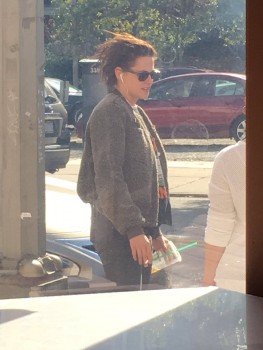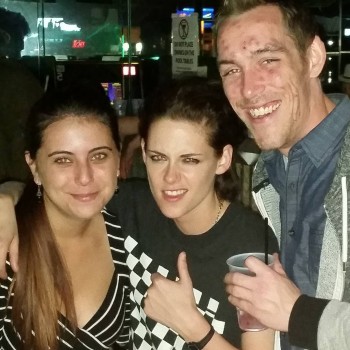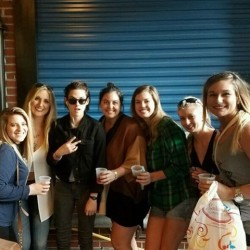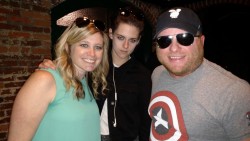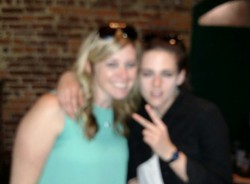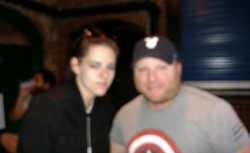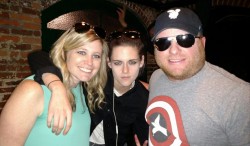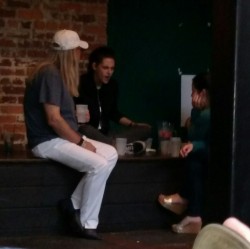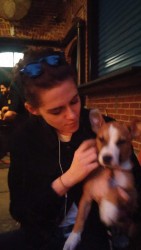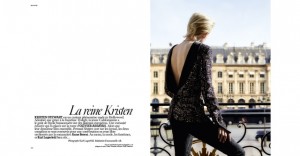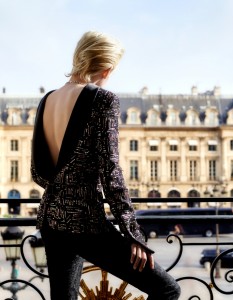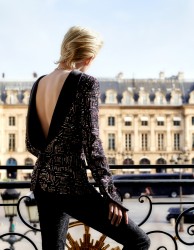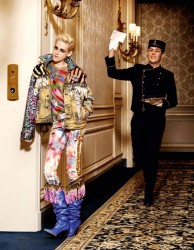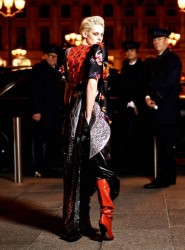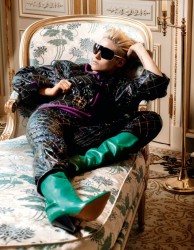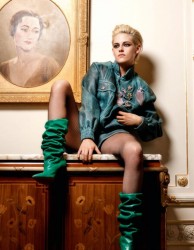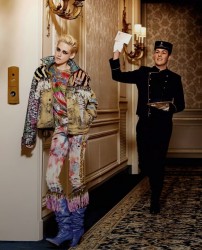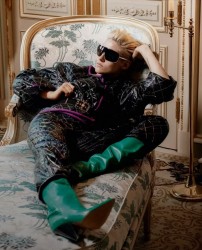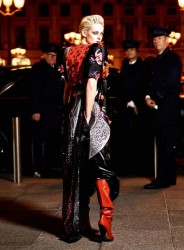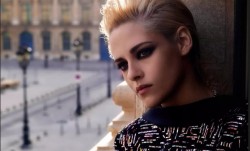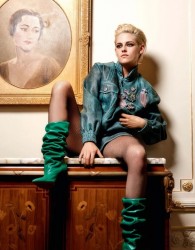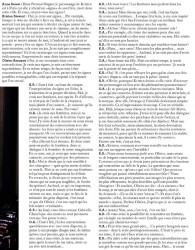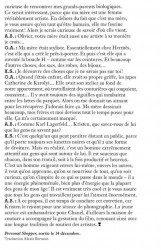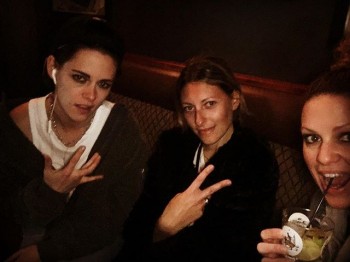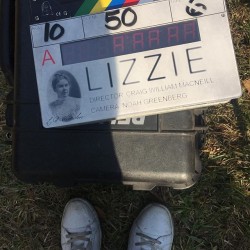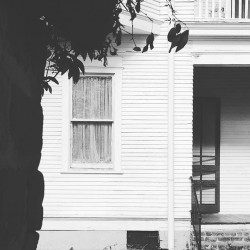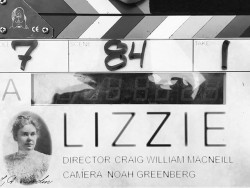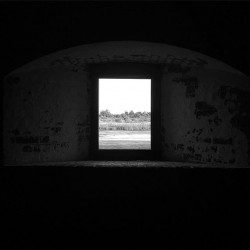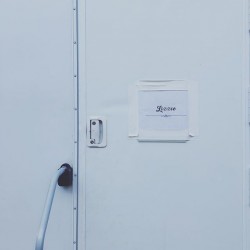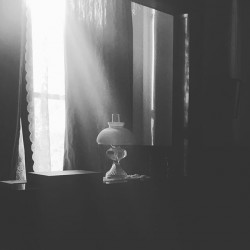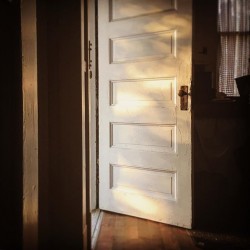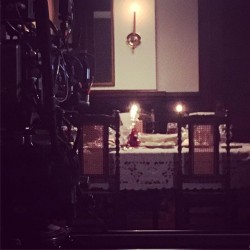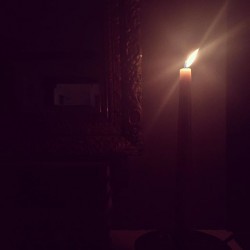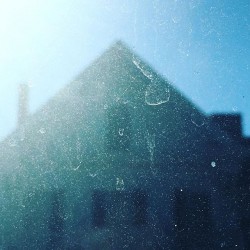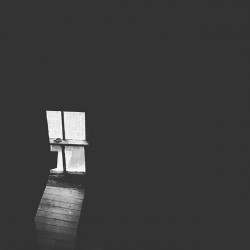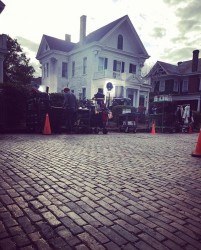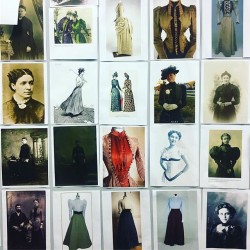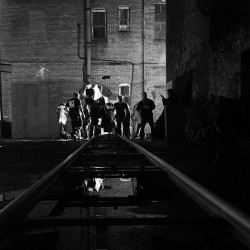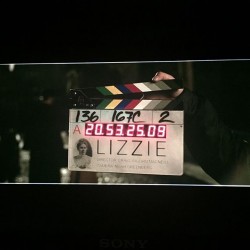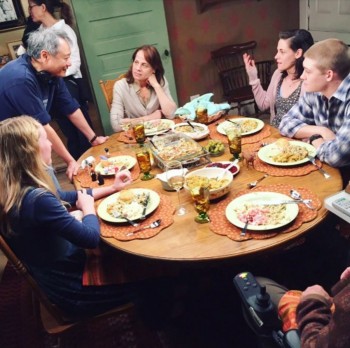Home
- Home
- Team Kristen
- Affiliates
- Wins and Nominations for 'Spencer'
- Cannes Film Festival 2018
- American Ultra
- Anesthesia
- Billy Lynn's Long Halftime Walk
- Cafe Society
- Camp X-Ray
- Certain Women
- Chanel
- Charlie's Angels
- The Chronology of Water
- Crimes of the Future
- Clouds of Sils Maria
- Come Swim
- Equals
- Happiest Season
- JT Leroy
- Lizzie
- Love Lies Bleeding
- Love Me
- Personal Shopper
- Seberg
- Spencer
- Still Alice
- Underwater
- Scheduled Appearances in 2024
Wednesday, November 30, 2016
Tuesday, November 29, 2016
Joe Alwyn talks about 'Billy Lynn' and mentions Kristen with Screen Crush
The film’s story is pretty straightforward, following Alwyn as a young Iraq War vet who returns home on a U.S. victory tour while suffering from PTSD flashbacks. But its the technology behind Billy Lynn that made it such a unique experience for the entire cast and crew of the film. Lee shot the movie in 3D at 4K resolution and 120 frames per second, giving the film a hyperrealistic look with astonishing clarity.
Since this camera equipment was totally groundbreaking, it meant Lee and his actors had to learn how to make a movie in a whole new way. As shocking and unusual as that experience may seem for a first-time actor, Alwyn says it became the norm for him. “Because I had never done anything before,” Alwyn told me, “it was probably stranger for other people coming in who had to unlearn what making a normal movie was like with normal size cameras.” I sat down with the 25-year-old Alwyn to discuss preparing for the role at a two-week-long boot camp and what it was like working with a cast including Kristen Stewart, Steve Martin, Vin Diesel, Chris Tucker, and Garrett Hedlund.
This is a really unique project to have as your first film. What’s the experience been like so far, making this then doing your first junket and first film premiere?
Yeah. Today is my first press day ever. It’s a little surreal, doesn’t feel quite real. But it’s fun and exciting, the whole journey of it over the last year and a half has been quite like, unusual and strange just because – having never done a film before and being at school last year. Everything came about so quickly, it’s been a bit of a whirlwind. It’s been a lot of fun and it’s been a lot of hard work.
What were your expectations going into your first film and how were they changed by the project?
I don’t think I had any expectations. I just feel very lucky to work with people I did, with a director like Ang, let alone be the lead character. So to be able to do that and so early in a strange circumstance and be part of a project that’s trying to push boundaries, as all of his films do, is amazing.
Since Ang shot in 4K and 120 FPS, I’ve read the other actors say how the cameras were so close to them while filming. Did you know when you got the job that making this would be such an intense and intimate experience?
When we were doing some screen tests, he was explaining and either I didn’t understand or really listen. I was just like, “OK I just want to get the part, let’s focus on that.” Because I had never done anything before, it was probably stranger for other people coming in who had to unlearn what making a normal movie was like with normal size cameras, rather than these huge things that were right in your face. Whereas, for me that became the norm. I had no frame of reference of what it was normally like. In some ways, it was probably weirder for them.
How did Ang direct you in those scenes?
He might do a wide shot of me and you, and then if it was going to film you or me [in a close-up], the cameras were just so big it would be there in my face. He’d be over there, just a voice, and I’d be looking. I have a piece of tape there [points across the room] and a piece of tape there and just have to imagine.
We just did a Q&A downstairs and Kristen was saying you would just use the memory of the wide shot when you have the eye contact and you just have to hold onto it and then kind of hear it in the voice behind the camera, put the pieces together, and have it clearly in your head when the camera came close. It was unusual. Took some getting used to, definitely.
Some of those close-up shots are really emotional scenes for Billy. Was it hard to perform that with such an unusual filmmaking technique?
Some of them, yeah. But in some ways I would like those scenes more. You kind of know where you are when you’re grounded in a deeper emotion, something deeper to hold onto, if that makes sense. There are a few intense scenes.
Did you do much research about American soldiers and their experiences during the Iraq War?
We did. I was cast and about four days later I had to leave and start boot camp. We did two weeks of boot camp in Atlanta. Seven of us did it, seven of the boys did it for two weeks. There was no contact to the outside world and it was run by these people who had served [as] Navy SEALs. It was just the most intense, tough thing I have ever, ever done until making the film, which was intense in its own way.
It really pushed us physically and mentally. It was really tough, but also incredibly useful and eye-opening. They were all very generous when they spoke to us about their own experiences and what they had gone through and had done. It wasn’t just about learning the tactics and how to use the weapons. It was putting us together as a group and a unit and trying to bond us as a bunch of boys, which was important for the story and important for the film.
Brotherhood is such an essential part of the story. Did you spend a lot of time with the rest of the Bravo Squad outside of the boot camp to create those bonds onscreen?
Yeah, because we were there from the beginning of the film until the end. Everyone else kind of dropped in and out for 1-3 weeks here and there, but we were literally there for Boot Camp until the end in Morocco.
This cast is full of so many acclaimed actors. Did they give you any advice for making your first film?
I don’t think there was any soundbite of great wisdom, but I didn’t ask for one. Maybe I should have. They were all – I think the fact that they had all done it so much and were so supportive. I was lucky that I really got on with them. Just being on set with them, they made it very comfortable. I spoke to Kristen a lot, she was in the same boat. This whole thing was an experiment so she couldn’t answer most of the questions I asked her in terms of making the film. But I would ask her a lot about, “Is this normal? What’s going on here?” I was trying to soak up what I could.
Ang told a story before the press screening about a scene he couldn’t use. It was supposed to be a cold Thanksgiving Day, but since you shot it on a hot day the camera kept picking up the sweat on your face. What was that like from an acting perspective, knowing you couldn’t hide those minute details the camera picked up?
On one hand, I’ve only done this film, but you’re trying to do the same in any film or any performance, theater or TV – you’re trying to be honest and truthful and in the moment. But I think because of the clarity of the image, anything that’s pushed or forced will come through. Because it sees so clearly into your eyes, you need to have the thoughts there and the layers there otherwise it will be seen in a way a lower resolution maybe doesn’t pick up. Just because it’s so much more focused and intense and all-seeing.
Both the war sequences and the halftime show are pretty intense in psychological and emotional ways. What sequence was the most challenging for you to film?
I loved filming those bits. They were just a lot of fun. They were really intense, but in some ways because – I mean, they built this halftime show for us. When you’re in Morocco running around in the heat with the weapons on, the more of that that is created, the less you have to do. The size of those moments kind of lend themselves to jumping into it. I really love those bits. I love some of the quieter scenes too. I really like the scenes I have with Kristen.
What was it like to watch the final film projected on the big screen at 120 FPS?
It was a trip. I’m not used to it, and I guess maybe you never get used to it. But I do watch it at times thinking, “I like that or I would have changed that. I wouldn’t have done that or I know what scene is coming next. Oh, they’ve cut that bit out.” It’s strange to detach yourself from it, or detach yourself sometimes from the experience behind it. Like, “Oh I remember that day and what we were doing, that’s when that happened.” It’s very strange. I think it will take a few viewings. The more you see it, the more you’ll be able to hopefully have some more perspective on it.
How do you think this experience of working with Ang will inform the rest of your work and how you approach other roles?
I was just so lucky to work with him for this film. Obviously it’s such a great character in such a great cast that I just want to continue doing that and find projects that I’m passionate about.
Billy Lynn’s Long Halftime Walk is now playing.
Source
Saturday, November 26, 2016
Kristen and Olivier Assayas will be on 'Recontres de Cinéma' (France) on 4 December for 'Personal Shopper'
Kristen and Olivier Assayas' episode on the French show 'Rencontres de cinéma' will air on Sunday 4 December at 12.05pm (CET) on Canal Plus.
3.05am PT/ 6.05pm ET/ 11.05am UK/ 10.05pm AEDT
Kristen and Olivier taped this episode in Paris on 2 November. Our previous post.
Source 1 (thanks to AdoringKS)
Friday, November 25, 2016
Kristen in Vogue Paris December 2016/ January 2017 Christmas Issue - Guest Edited by Karl Lagerfeld
LA REINE KRISTEN
Photographer: Karl Lagerfeld
Styling: Emmanuelle Alt
Click on images for full view.
Vogue steps inside the world of Karl Lagerfeld this Christmas for a special double issue created by the master himself, alongside his muse Lily-Rose Depp and the Vogue Paris editorial team. Karl reminisces on one of the longest and most illustrious careers in fashion, spotlights his leading ladies and shares his greatest reads, with - of course - a special appearance from Choupette. With a collector's cover photographed by Hedi Slimane, also a close friend, you can pick up your copy from December 5.
WWD According to Vogue, Lagerfeld reflects his epic career in fashion and shares his greatest reads, favorite sunglasses and a selection of photography, including a new fashion story starring Kristen Stewart, a Chanel ambassador.
Lily-Rose Depp and Karl Lagerfeld are on the cover.
We will post the interview in English once available.
You can order it from the following online retailers that deliver worldwide:
One (UK site) Two (French site)
We will post the interview in English once available.
You can order it from the following online retailers that deliver worldwide:
One (UK site) Two (French site)
Source 1 2 HQ 1 2 Scans Gossipgyal
Thursday, November 24, 2016
Wednesday, November 23, 2016
Kristen and Ang Lee's interview with Courier Mail (Australia)

Director Ang Lee had only seen one Kristen Stewart film when he approached the actor to play a pivotal role in his groundbreaking drama Billy Lynn’s Long Halftime Walk, about a traumatised US soldier who is celebrated as a hero when he returns from the Iraqi War. It wasn’t Twilight.
The performance that had etched itself onto Lee’s subconscious was the free-spirited teenager Stewart played Sean Penn’s survival drama Into The Wild (2007).
In terms of screen time, that role, shot the best part of a decade ago when Stewart was just 16 or 17, didn’t amount to much more than a cameo.
“It reminds me of how Heath Ledger used to work for me,” says Lee.
“If you saw him in one movie — like Monster’s Ball — you just remembered him. He was like the emotional core.
“Kristen gave me that vibe.”
The far-reaching impact of Stewart’s performance in Into The Wild goes some way to explaining the success the former “tabloid brat” has had in reinventing herself as a serious independent actor in the wake of the final Twilight instalment, which was released in 2012.
The actor had already received solid reviews for her performances as Joan Jett in The Runaways, Marylou in On the Road, and Em Lewin in Adventureland.
Post-Twilight, however, the critics have been positively effusive.
“Sensational” was the adjective Rolling Stone used to described Stewart’s performance in Clouds of Sils Maria, for which she became the first US actor ever to win a Cesar, or French Oscar.
"The role … calls for a baleful eye, rare cunning and expert comic timing. Stewart nails every nuance,” was the verdict.
Recent notices for Woody Allen’s Café Society, in which she starred opposite Jesse Eisenberg, have been even more enthusiastic.
“Stewart is good enough to almost make you wish for another version of The Great Gatsby just so she could play Daisy,” said the Hollywood Reporter.
“Glorious” was New Statesman’s passionate summary of her performance.
“It’s been hard, but obviously every step I have taken has led me to this particular spot,’’ Stewart told News Corp Australia when American Ultra was released last year.
“And I wouldn’t change it. Not personally. Not professionally. Nothing.”
With the benefit of hindsight, it’s the phenomenally-successful Twilight Saga stands out as the aberration in a career that spans Panic Room with Jodie Foster (2002), and more recently Still Alice (2014), with Julianne Moore.
Lee approached Stewart to play the role of Billy Lynn’s sister because he needed an actor who was capable of packing a big punch in a relatively short space of time.
“It’s an angry part. She sort of represents the dissolution of the American dream,’’ he says.
“It’s not a big role but it’s a significant one; the emotion lands on her final scene. The movie didn’t have time to develop her actually so it’s a lot to ask.
“I think she delivered.
”She has the necessary weight and intensity and devotion.”
For Stewart, who is currently dating singer-songwriter Annie Clark, better known as St Vincent, the character functions as the film’s emotional backbone.
She embraced the challenge but “without sounding simplistic, I would probably have done anything with Ang. I have grown up watching his films.”
An added incentive was Lee’s decision to push the technological boundaries of 3D, shooting the film at 120 frames per second, twice the previous record (The Hobbit: An Unexpected Journey) and five times the standard speed of 24fps.
The technology is so groundbreaking, only half a dozen cinemas in the world have the capacity to screen it in that form.
"The way it’s being captured is just so forward and I wanted to be the first step in that new process,” says Stewart.
But when it comes to choosing roles, the actor insists she has no real game plan.
"I make really instinctual, impulsive choices in terms of stories and people that I find myself able to bring to life.”
Like the Ben Fountain novel from which it was adapted, Billy Lynn is set on a single day in 2004.
The title character’s Iraqi War platoon is to be celebrated at the Dallas Cowboy’s Thanksgiving halftime show.
But everybody seems to have their own take on the war hero’s story, which is revealed in flashback.
And that makes it exceptionally difficult for the traumatised soldier to work out what his own version might be.
“He comes home a different man. There’s a massive separation or divide that occurs,” says Stewart, whose outspoken character is passionately concerned for her brother’s welfare.
She tries desperately to dissuade her brother from going back.
“It’s not the most divided way of looking at things — it was a ridiculous and senseless war,’’ says the actor who plays her.
“Let’s be honest, we didn’t know. But when you put young boys in the middle of that, it’s important for our generation of filmmakers to tell those personal stories.
“Yes it’s political. But at the same time it’s just so close to home, it needs to be explored.”
After shooting seven films, back-to-back, over the past two years, Stewart has taken a bit of time to “replenish the well.”
“I got a little burned out,” she says.
“My schedule was pretty full on for a long time … I guess I tempered it rather than taking a break.”
During that “down time” she wrote and directed the short film Come Swim, which is currently in the final stages of post- production.
“I have never been happier doing anything,” she says.
“It was so much fun.
"I don’t see a huge distinction between acting and directing — it’s kind of like the next level of my life and I feel really lucky to be able to explore that now.”
Over the Christmas break, Stewart intends to start developing her first feature.
But right now, she is filming the psychological thriller Lizzie, based on the infamous 1892 Borden family murders, in Savannah.
Chloe Sevigny plays the title character. Stewart plays the young maid she befriends.
After that, the 26-year-old actor is open to offers.
“I am just going to keep my head down and plough through,” she says.
“There is no rhyme or reason as to how things fall into your lap, what becomes the story that you want to tell.
“I have nothing other than my gut to lead me and it’s not let me down so far.
"So right now I have no grand plans. I am just going to carry on.”
Tuesday, November 22, 2016
Sunday, November 20, 2016
Photo of Kristen in Savannah with makeup artist Stacey Panepinto - 19 November 2016
Click on pic for full view.
The photo was shared by makeup artist, Stacey Panepinto, who is working on 'Lizzie' in Savannah.
Also known for doing makeup on several other Kristen films eg. 'Equals', 'Breaking Dawn' Part 1 and 2, 'Cafe Society', 'SWATH', 'American Ultra' and 'The Cake Eaters'.
Source
Labels:
Lizzie,
Lizzie Borden,
Photo,
Savannah
Friday, November 18, 2016
Thursday, November 17, 2016
Kristen's interview with St Louis Today for 'BLLHW'
At age 26, Kristen Stewart has already built a film career that many a young actress would envy. Perhaps best known as Bella Swan, the heroine of the “Twilight” vampire franchise, Stewart has achieved commercial success while earning critical respect. Last summer, she could be found on the cover of Film Comment, the bible of serious moviegoers.
Her latest film, “Billy Lynn’s Long Halftime Walk,” opens Friday. Based on the novel by Ben Fountain and directed by Ang Lee (“Life of Pi”), it’s the story of a heroic soldier, his experience in Iraq and his doubts about being put on patriotic display at a football game. Stewart portrays Lynn’s sister Kathryn, who objects to his plans to return to the war.
In a recent interview, Stewart said that in addressing a soldier’s perspective, two-time Oscar winner Lee has created a film that “externalizes a very internal feeling.” Although Kathryn is a supporting role, she said, it’s one that she felt was worth taking on.
“The part is really economical,” Stewart said. “But it’s really impactful and definitely provides this emotional space.”
“Billy Lynn’s Long Halftime Walk” allowed Lee to experiment with technology. Among the options available is screening the film at 120 frames per second rather than the standard 24, creating an effect that viewers have called hyper-real. But in most theaters, including those in St. Louis, the film will be presented in the usual format.
Stewart said the technology posed unique acting challenges.
“I was out of my element,” she said. “Usually, I’m very aware of the process and really kind of nosey. In this case, it was like swimming around in an Olympic swimming pool. But it was really cool.”
Lee took a similarly experimental approach to “Hulk” (2003), in which he sought to mimic the design imperatives of a comic book.
A native of Los Angeles, Stewart has been acting since she was 9 years old. One of her earliest big-screen roles was as Jodie Foster’s daughter in director David Fincher’s “Panic Room.” Since then she has become one of Hollywood’s highest-paid actresses.
Critics were impressed with Stewart’s supporting work as Julianne Moore’s daughter in “Still Alice” and as Juliette Binoche’s personal assistant in “Clouds of Sils Maria.”
“I’ve known Julianne since I was 12 years old,” she said. “I worked with her husband (director Bart Freundlich) on a movie (‘Catch That Kid’), and she’s always felt like family to me. So playing her daughter, there was an ease to it. We approach our work quite similarly, and I think she’s a really impressive, deeply inspiring woman.”
Stewart describes Binoche — a French actress perhaps best known to American audiences for her Oscar-winning supporting performance in “The English Patient” — as “so powerful and so smart.”
Both Moore and Binoche, she said, are actresses whom she looks up to and who made her “want to rise to the occasion.”
As one of the film industry’s most in-demand actresses, Stewart has her pick of projects. What she looks for in a script, she said, is something that moves her.
“There’s a really particular emotion that occurs inside when you read something that you feel you’d like to join,” she said. The screenplay for “Billy Lynn’s Long Halftime Walk,” written by Jean-Christophe Castelli, “just articulated something really human and something that I really believed in.”
Stewart is just as likely to sign on to a low-profile indie project as to a potential mainstream blockbuster.
“In the case of Ang’s film, the only way to tell that story is big,” she said. “And I have no aversion to big movies if they’re motivated by something important and worthwhile — and they don’t feel like they’re being made for purely cash-in entertainment. That, I’m not into.”
Source
Kristen, Steve Martin and Ang Lee talk 'BLLHW' with Nashville Scene
What was the motivation behind inventing a new kind of cinematic language for this film?
Ang Lee: I believe art is what you don’t have, not necessarily what you do have. That compensation very frequently becomes the art itself. Twenty-four frames per second has been the standard for almost a hundred years, and has given us so much great art and so many great movies. How dare I challenge that? But when it comes to digital cinema, I just get the urge to see dimension, and when I see dimension, 24 frames per second doesn’t suffice, which leads to the next step. And I know that is a big leap.
Do you think this is the next step in the evolution of cinema?
AL: I have no interest in technology. But since I did [Life of] Pi, I’ve seen what digital cinema can do, and what it does is allow cinema to be dimensionalized, to be seen the way our eyes see. This seems like a logical step for me. I think it’s just the beginning. It can do anything, as long as you know how to do it. I know eventually I want the reality of a thing, the information. I want to read faces, and the close-up of the human face and the spaces that you put them in — that really draws me in.
As an actor, what was it like to be approached with this whole new way of making a film?
Steve Martin: Going into it, I thought, “I’m 70 years old, and I’m going to be shot in high-def, with no makeup. I’m gonna look fantastic.” You know how you take a photo of your dog with your phone, and their nose comes out, and it’s so cute, because the nose looks almost as big as their head? I thought, “I’m gonna be in 3-D; does that mean my nose is going to be poking out into the audience?” But I prepared for the role — I went to fancy restaurants, I drove around in fancy cars. But I was impressed by the idea of the technology.
So there was an appeal in the newness and potential of it?
SM: The camera was actually quite physically beautiful, and I became rather attracted to it. It’s a gorgeous piece of machinery, and the operation of it is so skillful. I felt like I could only act, and do my job. And it felt like, a lot of the time, that we weren’t really acting; it became quite a natural experience. As a process, it became really fun, especially when working with so many talented people.
It seems like one of the main recurrences in both Fountain’s book and in the film is the way in which no two people seem to know what the concept of “supporting the troops” means or entails. How did you approach that?
Kristen Stewart: What I found most interesting about this was that you have [Kathryn, the titular character’s sister], who is essentially a pacifist, but who never expresses her liberalism in any way that isn’t humanitarian. She’s never provoking anyone, and she’s being made to acknowledge a gap that has grown between her and someone that she’s known her entire life but can now no longer hold as close as she has before, because they’re now completely different beings. That changes a person, when you can no longer keep someone close enough to love them and comfort them as much as you want to. You’re so deep inside of something that you’ve never been able to get an exterior perspective on, and is that fair? Can you be proud of that?
It’s very contentious now in modern storytelling: Who can represent whom? How do we responsibly tell the story of others?
KS: I have so much more distance than someone who has served does, yet I still have that same feeling. Can I own my feelings? Do I really understand the situation? I think Kathryn is coming from a place of, “Let’s understand what we’re fighting for.” It’s a personal response, but she’s genuinely worried for him. Because what’s going to happen when his training fades, when the conditioned responses fade and you have to be a human being again who doesn’t necessarily know how to contend with what happened? And further on from that, how do we contend with having put those people there, in that situation?
She’s a different kind of a character than we usually get in stories about military families.
KS: She’s the personification of Question, rather than Opinion.
Are there any of your other films you wish you could have had this technology for?
AL: No. Only a few shots in Hulk. He has a big head, and the separation between the eyes is greater than a normal human head, so you can represent “puny human.” It’s not for everything.
Are you at all worried about how audiences will react to the film, especially depending on how they are able to see it?
AL: My eyes are different than your eyes, because I’ve been doing this film for two years. Before that, it was a four-year struggle getting into digital cinema and 3-D. I think you get used to it. I think it can allow you more ways to put things together in your mind, and when you have more and more detail from the image, more information, it’s not necessarily overwhelming. It becomes comforting.
Source
Wednesday, November 16, 2016
Anna Kendrick talks 'Twilight' and mentions Kristen in her book "Scrappy Little Nobody"
Actress Anna Kendrick is mostly known for “Pitch Perfect” and “Up in the Air” and having a really funny Twitter account — so it’s likely that you even forgot she was in “Twilight,” the hugely popular vampire franchise that took over the world in 2008.
“For those of you thinking, Wait, she was in ‘Twilight’?, I sure was!” Kendrick, 31, writes in her new memoir, “Scrappy Little Nobody,” which was released Tuesday. “I was the sassy, awkward friend who broke up the relentless succession of intense stare-downs with musings on boys, tanning, and various school gossip. It was a sweet gig.”
As the role of Jessica Stanley, a friend of the lead character, Bella Swan (Kristen Stewart), Kendrick’s relatively minor role meant she got to collect a “Twilight” paycheck but only spend a few weeks on set. As she puts it, “The best part was that I got all the fun with none of the consequences,” such as the “creepy super-fame” that the movie’s stars like Stewart, Robert Pattinson, Kellan Lutz and Taylor Lautner endured.
However, it’s probably good that Kendrick was only around for part of the time — as she describes it, the filming experience sounds rather miserable. She explains that they filmed in freezing weather in Oregon and Canada, where the setting was beautiful but extremely uncomfortable. It didn’t really help the mood on set. When she arrived a few weeks into filming, thrilled to join, she didn’t get the most enthusiastic response from the cast.
“Kellan Lutz is the sweetest guy, but that day I think he might have strangled me if he’d had the energy,” Kendrick writes. “Kristen Stewart — one of the most committed actors I’ve ever worked with — made a valiant effort to be friendly, but I could tell she was putting her back into it. Underneath every word, I heard You don’t know, man, you don’t know what it’s like out there.”
Yeah, it doesn’t sound fun. “Wet and cold is not an environment conducive to making friends,” she added. “Imagine if the first four weeks of a new job were spent outdoors in the freezing rain.”
By the fourth movie, Kendrick writes, she had earned enough clout to land a coat that she could wear when she wasn’t filming; unlike the heroic extras, who for whatever reason weren’t wearing coats between takes and were only given space heaters. It doesn’t sound like an experience she’s likely to replicate, even if the movie is another franchise that could rake in a gazillion dollars.
“If you told me I had to be in that weather with no relief, I would have bailed like the little b—- I am. Extreme cold messes with you,” Kendrick writes. “The elements don’t discriminate. And no amount of ‘you’re getting paid to do this’ matters when your body’s basic survival requirements are in play.”
Source
Set Photos from 'Lizzie' - Savannah, Georgia - November 2016 (No Kristen)
Click on pics for full view.
Production started on Monday 14 November 2016.
Production Designer Elizabeth Jones
Production Company: Destro Films
Source 1
Labels:
BTS,
Craig Macneill,
Lizzie,
Photo,
Production
Tuesday, November 15, 2016
Monday, November 14, 2016
Saturday, November 12, 2016
Kristen and Joe Alwyn's interview with the Indian Express for 'BLLHW'
Kristen Stewart on her upcoming film, Ang Lee, and what scared her on the set.
With her first red carpet appearance with girlfriend St Vincent, aka Anne Clark, making their relationship official, actress Kristen Stewart has been hogging headlines and social media timelines. The Twilight saga star plays Kathryn, sister of the protagonist, a soldier named Lynn (Joe Alwyn), in her next film Billy Lynn’s Long Halftime Walk. She also shares screen space with Vin Diesel and Steve Martin. The war drama—based on a book of the same name by Ben Fountain—is directed by Academy Award-winner Ang Lee and is set for release next week. Here, the 26-year-old talks about working with Lee and on understanding her character.
What was it about this project that made you want to be a part of it?
I wouldn’t want to sound super simplistic in saying, ‘I probably would have done anything with Ang’. I grew up on his movies. When it came to be, I was pretty traditional. I read the script and I loved the opportunity to do something really whole and, over the course of four days, I knew that I needed to endow this movie with a lot of what it says in a really short period of time.
Tell us more about the relationship between your character and the protagonist?
There’s an understanding that allows you to love. Somebody that she (Kathryn) loves more than she has loved anyone, comes back, completely unknown. The one thing that kind of tips me out about it is that there’s such a crazy, remote relationship to this, because that’s the only one we could have, and rather than trying to understand him, she wants him to understand himself. Like ‘just think for yourself, understand yourself, I’m not going to push you in any direction because I haven’t walked in your boots’ so to speak. There was one scene where you see him deciding to take someone’s life. I couldn’t watch it. I’ve seen people kill others in movies, but not in this way. In the scariest sense, it lodges you in your body in the most visceral way, in regards to something that may not feel so visceral to us now. That’s what I think the movie does and I’m really thankful to be a part of that.
Since the movie is the first ever to be shot in super-high-resolution 3D (at 120 frames per second), as an actor how conscious were you about this media?
It’s crazy because half of you feels disconnected because what you’re used to as actors is being observed from a somewhat different perspective and having an unbreakable connection with another person that’s looked at from the outside. And then the other half feels more intimate because you’re engaging with something head on and you know that you’re being looked on directly, and that is a really vulnerable feeling. It’s a very different feeling and it’s not one that I’ve ever had before.
Actor Alwyn on getting under the skin of the lead character (Billy Lynn).
I was called a month before, so the timing was pretty short. But the seven of us did two weeks of boot camp in Atlanta. We had no contact with the outside world. Every day we went through training which was incredibly intense and pushed us to the breaking point. But it also brought us together as a unit. Also, I’m British and Billy is American, but ultimately, even though it’s within this bigger framework of American prejudice and commentary on the war, it’s a very human story about a young boy finding out who he is in the world, where he wants to go and where he belongs. That’s what I tried to hold on to.
Source
Subscribe to:
Posts (Atom)



